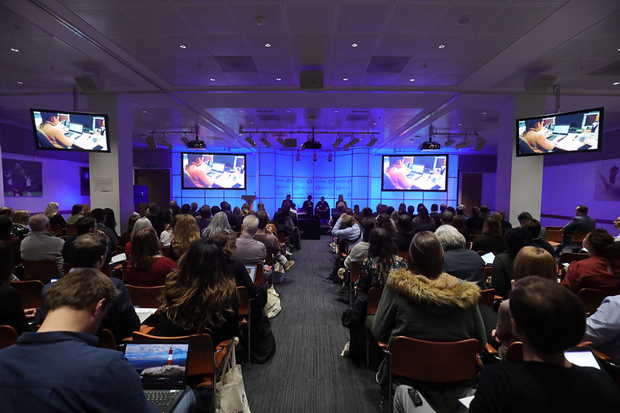When it comes to reporting breaking news, the days of waiting for material from a newswire to come through are long gone.
Newsrooms now rely heavily on eyewitness media, or user-generated content (UGC), to alert them to developing events and provide multimedia content for stories.
For Fergus Bell, handling UGC in an ethical way is essential for the future of journalism. As the co-founder of ONA’s UGC Ethics Initiative, he sees a sustainable model for handling UGC as one that protects both journalists and their sources — and builds public trust in news organisations.
He said in his keynote address at the news:rewired ‘in focus’ conference:
“There are ways to be competitive and ethical at the same time. I think that it requires the industry to work together. There are certain standards that we can come to – just because this is new, it doesn’t mean that we can’t get together and talk about it.”
Sustainability means building confidence so that newsrooms and journalists continue to be trusted to handle UGC in an ethical and professional manner. Below are some do’s and dont’s for building a sustainable workflow for handling UGC in the newsroom.
DO
- Be transparent. Make sure your audience knows how you’re handling UGC.
“Transparency is key here and that comes back to sustainability. Our audiences are going out looking for this content…. They have verification skills of their own and they need to know that we can do the same. They need to understand a little more about our standards and the way that we work in. Not just for the sake of filling in time, but to show them that we know what we’re doing.”
- Pay for tools. Bell thinks the days of free software are nearing an end. He recommends using paid services like DataMinr and SAM to filter for UGC that can add value to your stories.
- Use social media platforms. TweetDeck, Google Trends, and Facebook Signal are all valuable resources for spotting UGC and picking up on footage from breaking news stories.
“At the very least it’s a springboard to what you want to read, what you want to be looking at in the short term future,” Bell said.
DON’T
- Re-publish unverified media. Just because other news outlets are embedding unverified content doesn’t mean yours needs to as well. Instead of seeing it as potentially lost revenue, view it as potentially gained trust. And if you can’t verify a source? Bell recommends searching for something new.
“If you establish that the source isn’t right, that the event is old or the content is faked, STOP. It’s very costly, in time, to keep verifying something. If something’s not right, go start looking for something that is [right].”
- Use disclaimers on unverified media. “I would encourage you to get rid of any disclaimers because there’s just no value there. What is the value of a disclaimer except to kind of hide behind it? I know that might be scary, but the winners in this are going to be the ones who can stand by the content that they determine is accurate,” Bell said.
- Bombard eyewitnesses with requests. As part of establishing workflows in the newsroom, come up with a strategy, so that eyewitnesses aren’t receiving multiple requests from your organisation. This looks unprofessional — both to your potential sources and the wider public.
- Leave it fully to automation. Bell said that while advances are being made in UGC verification — including exciting work on neural network technologies like Thingscoop and TinEye —the most important tool is still your brain. Your instincts, experience and knowledge still can’t be replicated by even the most advanced machines.
“You need to know when you’re looking at something that it’s not real or it hasn’t been uploaded in a way that meets a common pattern,” Bell said. “A lot of disproved content is all about how it emerged.”



